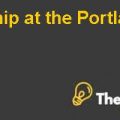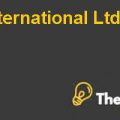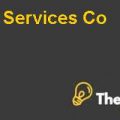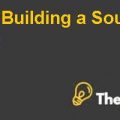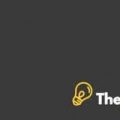Overview
Robert Swanson incorporated Linear Technologies in 1981. The main operation of the company is designing, manufacturing and marketing circuits (semiconductors). These circuits are used in numerous electronic appliances such as digital cameras, cellular phones, navigation system and complex medical devices.
In thesemiconductorindustry, Linear Technologies mainly focuses on theanalog segment. In this segment, the success and competitive position of the company mainly depend over its workforce because a top engineer can develop high-performance products. Along with this, the second most important factor in this industry is fabrication facility.This facility becomes obsolete in 3 to 5 years, therefore, it needs replacement after this period. Furthermore, the main competitors of the company are Analog Devices, Maxim, and National Semiconductor.
Linear Technologies mainly earns its revenues through industries hence its customer base consists of corporations. In 2002, communication industry, automotive, computers and others contributed 33%, 6%, 27% and 34% of the total sales of the company.
Required Funds and available resources:
Dividend: and Share Repurchase:
In 1992, Linear Technologies declared dividend for the first time. After that, the company continuously increases its dividend by approximately $0.01 per share. The payout ratio of the company was 14.59% in 1993, however with the passage of time, this ratio fluctuated and in 2000, it became9.71% while in 2003 it became 27.26%.
Linear Technologies continuously purchases its shares since the Q3 of 1993.In Q3 of 1993, company purchased shares worth 1.2 million. However, from Q3 of 1999 to Q1 of 2001, the company did not purchase any of its shares while in Q3 of 2003, company made the highest repurchase of shares worth $125million. From thisanalysis, we can conclude that the company uses more funds in repurchasing its shares rather than paying the dividends.
The sales of the company decreases by 47% in 2002 and then it further decreases by 13.96% in 2003, however, the net income margin of the company is in improving phase from 3.52% it becomes 10.67% during 1993 to 2003 respectively. Along with this, the required capital expenditure in 2003 is 2.22% of sales. Moreover, from the free cash flow analysis, we can conclude that the company will have excess cash flows of $180.1million in 2003.
By analyzing the abovesituation, wecan conclude that Linear Technologies mainly needs funds to maintain its dividend policy and share repurchase however, currently,company may also need fund to replace its fabrication facilities.
In 2001, Intel built this facility at $200million, so after taking this amount and the amount of dividend and share repurchase of 2003,we can conclude that the required funds are approximately $286.22million, however after subtracting free cash flows of 2003, the net required funds are approximately $106.12million.
2003
Capital Investment in Fabrication Facility 200
Dividend 47.02
Shares repurchase 39.2
Total funds required 286.22
Free Cash Flows -180.1
Required Funds 106.12
Available Resources:
Linear Technologies does not have any long-term debts, therefore, we can say that the company is 100% equity financed hence the company can obtain required funds through using debt source. Debt is considered as acheaper source of finance, therefore, it will improve the overall growth of the company because theuse of acheaper source of finance will reduce the overall required return and risk of the company. Moreover, thecompany can also obtain required funds by selling its spare assets...................
This is just a sample partial work. Please place the order on the website to get your own originally done case solution.

